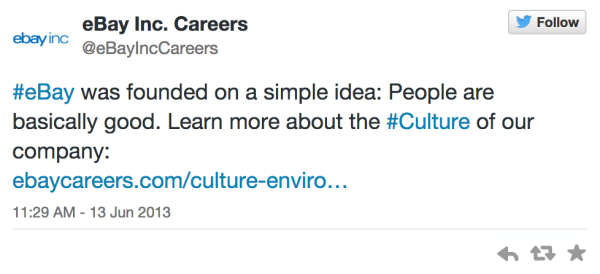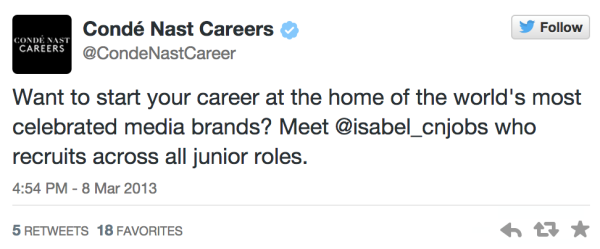By Alexandra Vornle
Recruiters and human resources professionals are increasingly using social media to reach out to candidates, especially on LinkedIn and Twitter. However, with millions of people on social media, one team of recruiters can hardly make a dent when it comes to searching and vetting those potential candidates.
Imagine what it’d be like to have access to the mass of highly skilled people on social media for free. With the vast number of people active on social media, this can become your reality when you pair social recruiting with employee advocacy.
With social recruiting, many Fortune 1000 companies are using social networks (Twitter, Facebook, LinkedIn, etc.) to source and recruit candidates. They’re on social media to define their brand as an employer’s brand and give reasons for candidates to pursue their career with that company. When done in tangent with employee advocacy, it’s an opportunity to involve employees’ social networks and, by doing so, increase your ability to reach more, better-qualified candidates.
Social recruiting allows companies to be active in a space that lends itself to conversation, feedback and interactions. It’s providing a chance for candidates to learn about a company’s culture, and for a recruiter to learn about a candidate’s background or skill.
With 1.73 billion active users on social media, there’s an opportunity for recruiters to connect with people they usually wouldn’t. If your company hasn’t already started to recruit socially, you should! It’s a trend that is only increasing.
Here’s a few guidelines that can help you start engaging potential candidates through your social channels and employee referrals.
Identify, Follow, Share and Engage
Identify
Identifying the type of candidate you’re interested in recruiting is the most time-consuming step of the social recruiting process. People usually have a wealth of public information online, but sourcing the candidates that fit your role isn’t necessarily easy.
A great way to make this step easy for your team is to involve your employees. Employees enjoy where they work and want to see their company grow with the addition of strong candidates. Employee advocacy helps extend your social reach past your company’s normal capacity. Undercover Recruiter found that an average employee will have 150 contacts on their social networks – 100 employees means reaching 15,000 potential candidates. This not only can significantly increase your company’s social reach, but employees genuinely want great people to join their team, and candidates appreciate the organic content.
Don’t forget to consider everyone as a potential candidate. People that have previously interacted with your brand socially are already fans. You can find great candidates by identifying strong profiles through your current social network following and see if they match any of your open positions.
If you’re having trouble configuring these lists, there are great social sourcing tools that compile candidates’ social information in one spot. They make it easy to search for candidates with a specific skill (Ruby, outbound sales, etc.). For example, Gild and TalentBin are two technical sourcing platforms that allow recruiters to search for candidates by skill, location, years of experience, or contributions to open source.
Follow
Whether you connect, follow, email or send a friend request, social recruiting is all about creating a social relationship with the people you want to eventually hire. Showing people that you’re interested in what they have to say is a great way to start an online relationship and you can encourage your employees to do this as well.
An easy way for recruiters to get started with this is to create a social recruiting account. A lot of large companies have social accounts that are specifically created to talk about open positions, the exciting things happening with the brand, and follow all the people they believe are great candidates. eBay Inc. Careers does a great job of making sure everyone knows they’re hiring while keeping the brand engaging.

LinkedIn is another source to find brilliant candidates. You can easily join thousands of industry-specific groups that have formed to create communities around different professions.
Encourage employees to join a group specific to their industry. Once part of the group, they have access to hundreds of people that could potentially be their newest team member. These LinkedIn groups constantly encourage contributions; whether it’s a tip or an open position, make sure your employees have enticing content to share!
Share
Working with your employees to share content across their social networks is a great way to inform everyone’s followers about the numerous accomplishments your company has achieved.
Assign one socially strong employee, perhaps in your marketing or social media department, to be the leader for employee advocacy. It’s this person’s job to create brand content that is attention-grabbing, informative, or entertaining. When writing about open positions, make it exciting. Condé Nast does a great job showing junior level candidates they have an opportunity to work with some great brands.

For example, here are two companies whose employees use Twitter to promote the open positions at their companies. By doing so, they can show their followers what their company is doing and easily refer them to the right person for a certain role. Referral hires have higher job satisfaction and tend to stay at jobs longer than others – 46 percent stay over 1 year, 45 percent over 2 years, and 47 percent over 3 years.

Engage
Interacting with potential candidates and having your employees do the same is a great way to get people engaged with your company. If a candidate tweets about something relevant to your company or the industry you work in, make sure you favorite or comment on the post. New hires can easily come from interactions in which the values of the candidate align with the value of the company. People enjoy receiving praise for the content they share.
Having your employees and company engage to build relationships socially allow you to eventually reach out about the candidate about a potential fit for a position.
Now it’s your turn. Start identifying potential employees, use employee advocacy to increase your reach, share content that is entertaining and informative, and engage with candidates to build a relationship. Start social recruiting and employee advocacy now; your next hire is only a few clicks away!
Alexandra Vornle is a Talent Marketer at SocialChorus. She frequently covers best practices for social recruiting, employee engagement and employee advocacy. Follow her at https://twitter.com/avornle.







